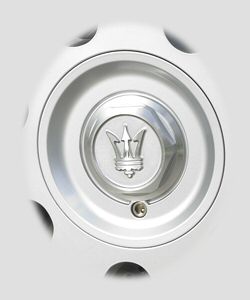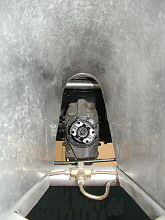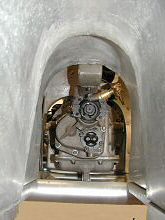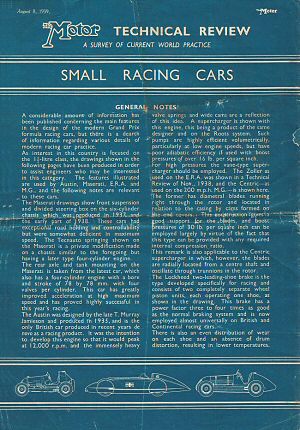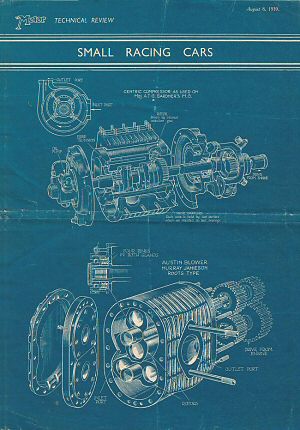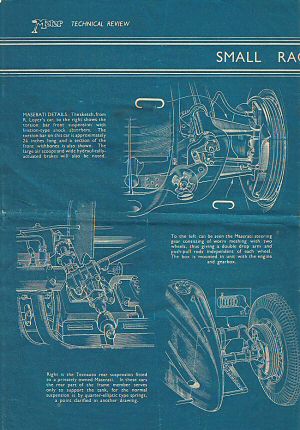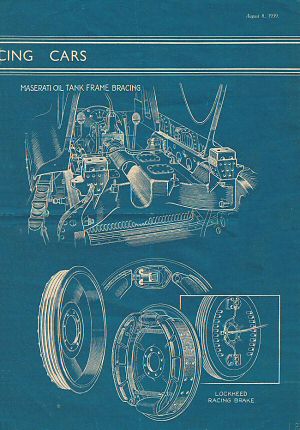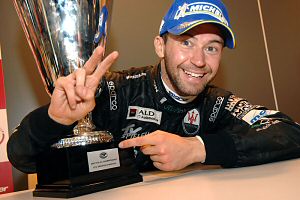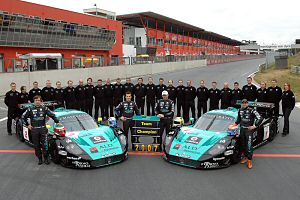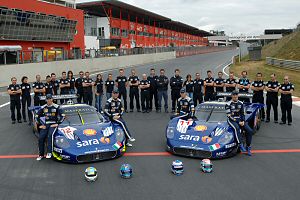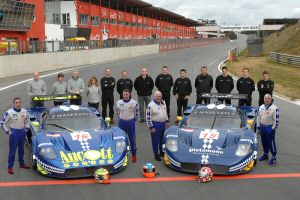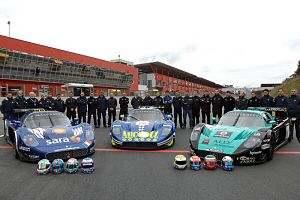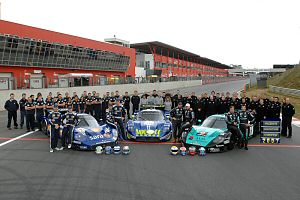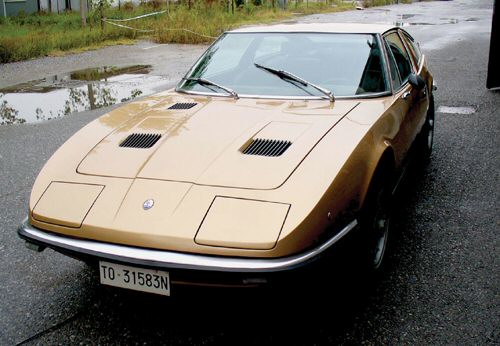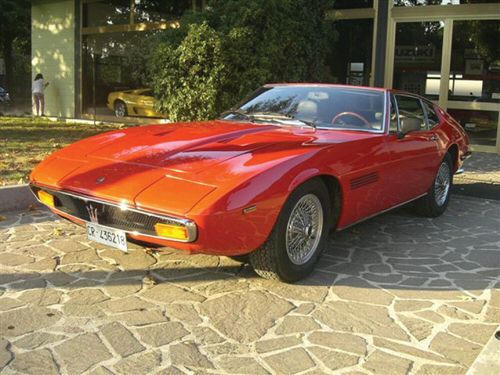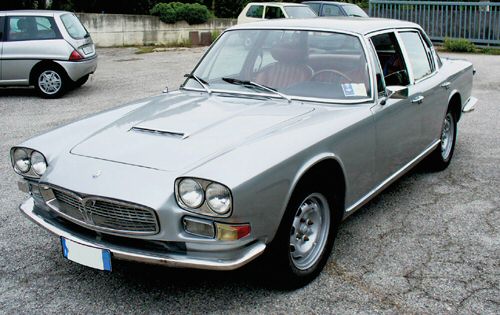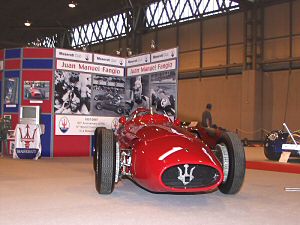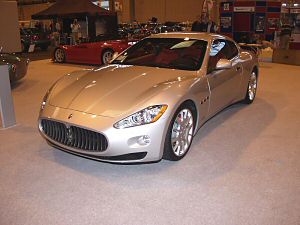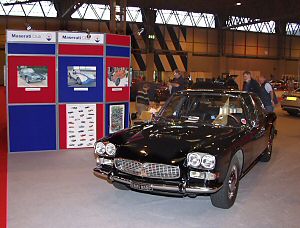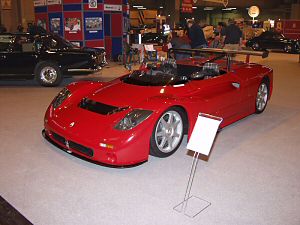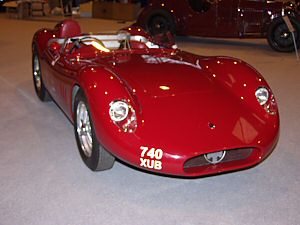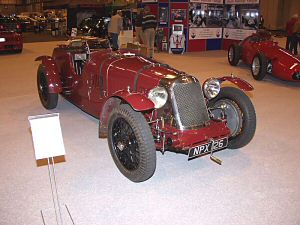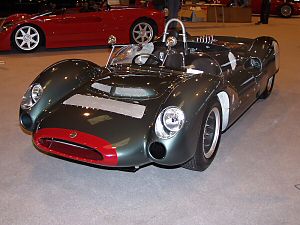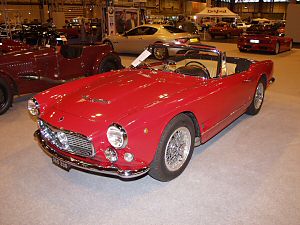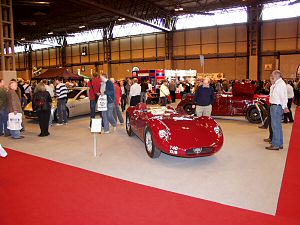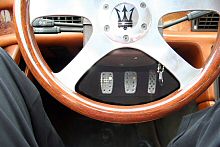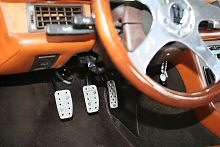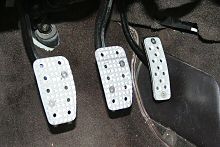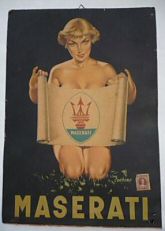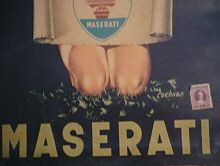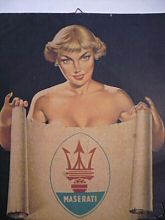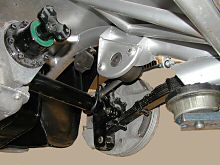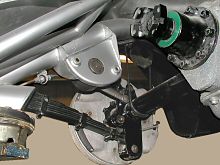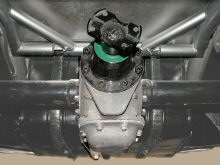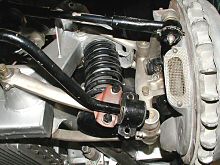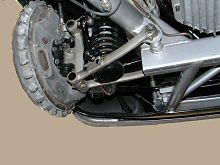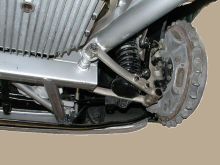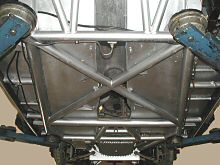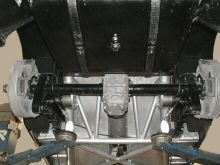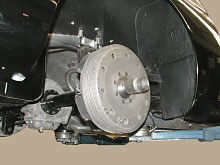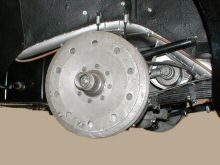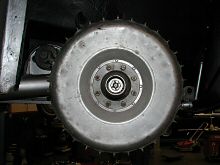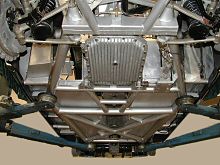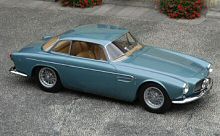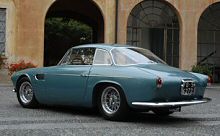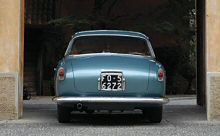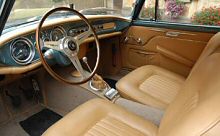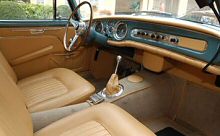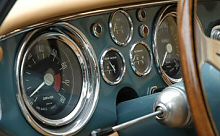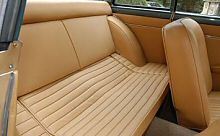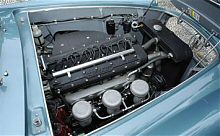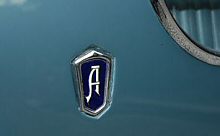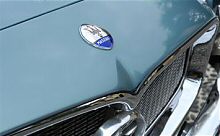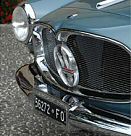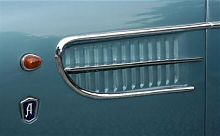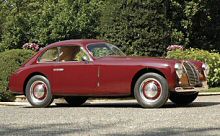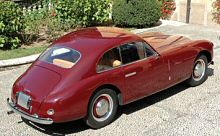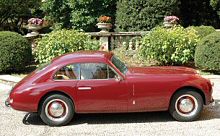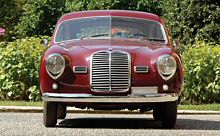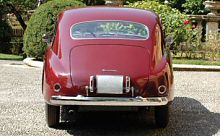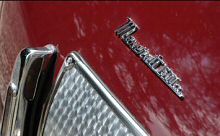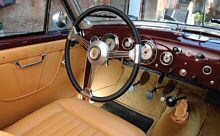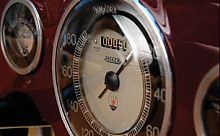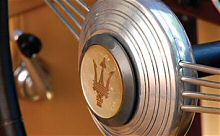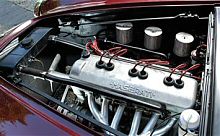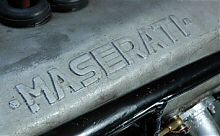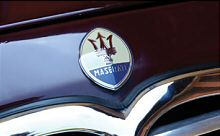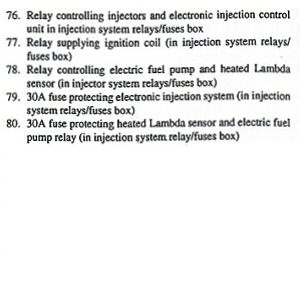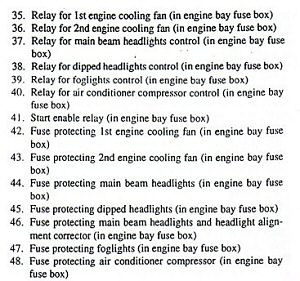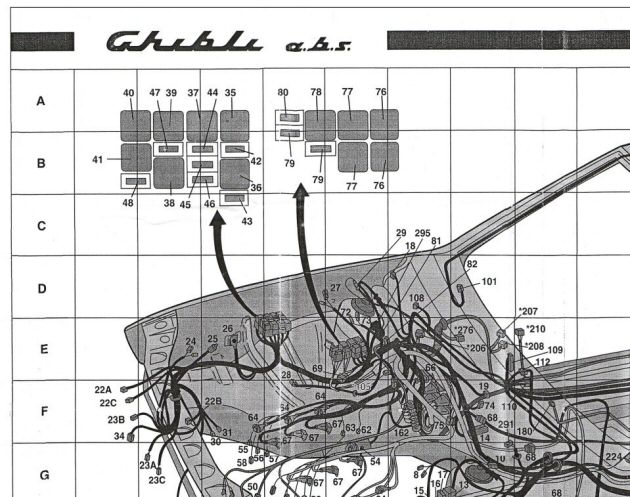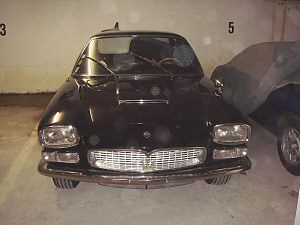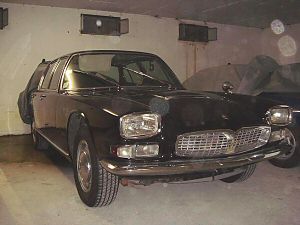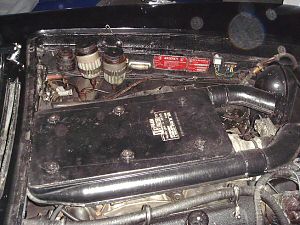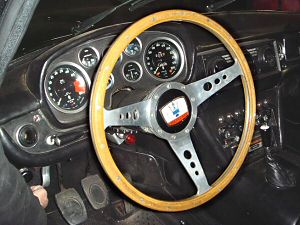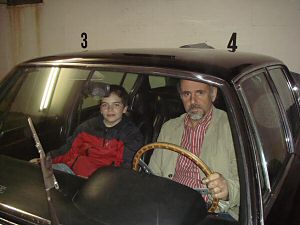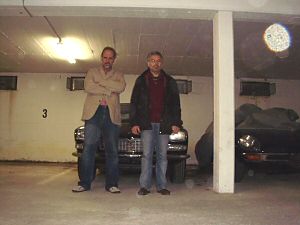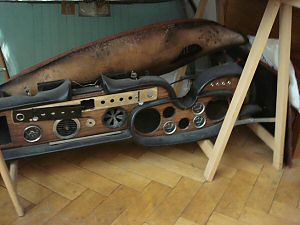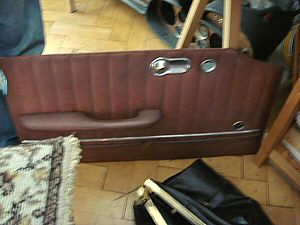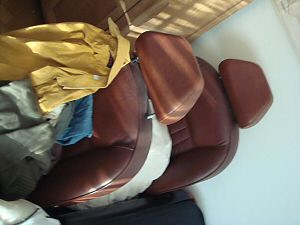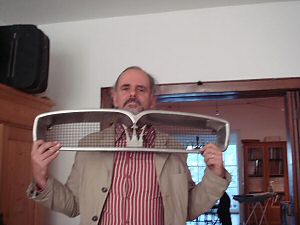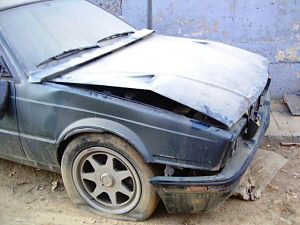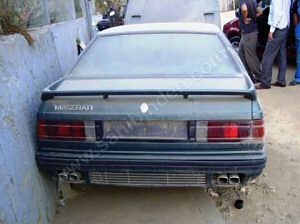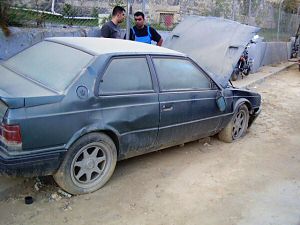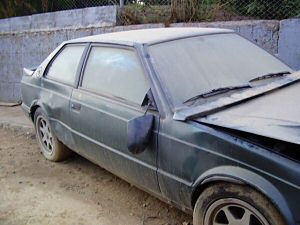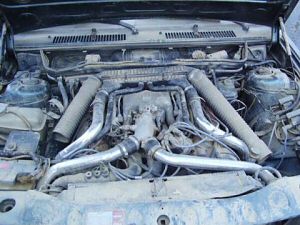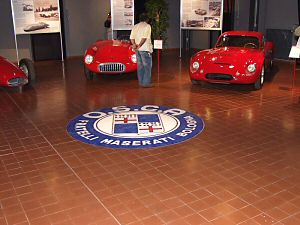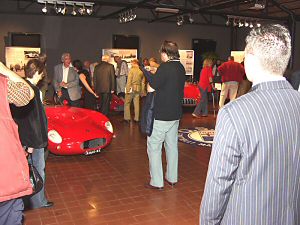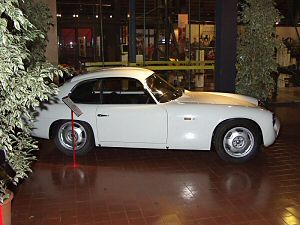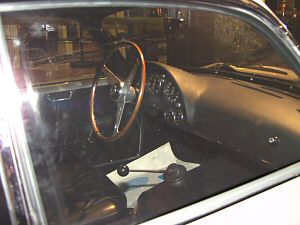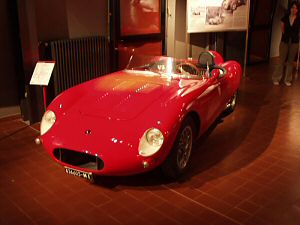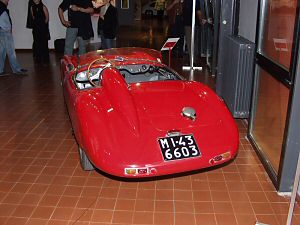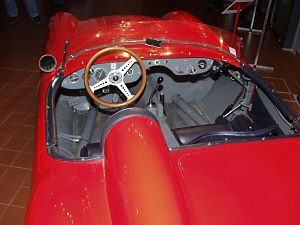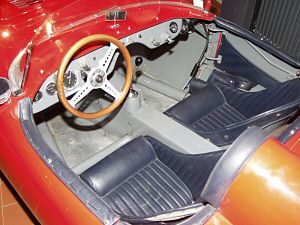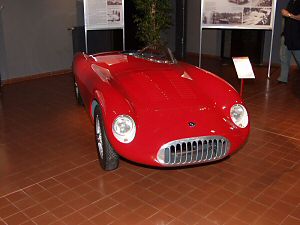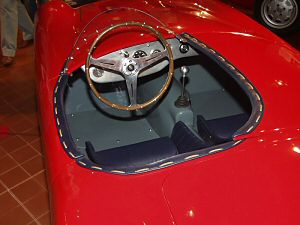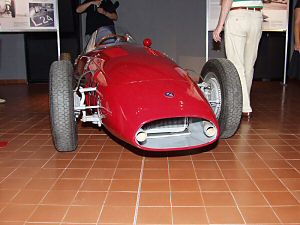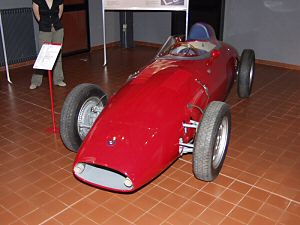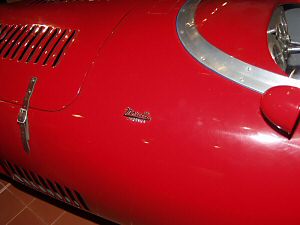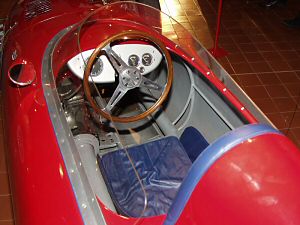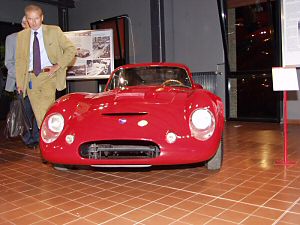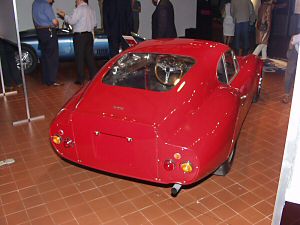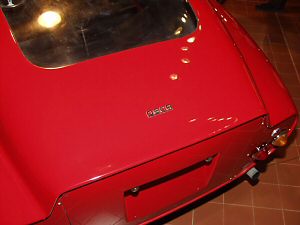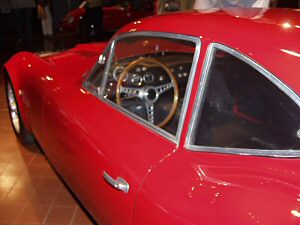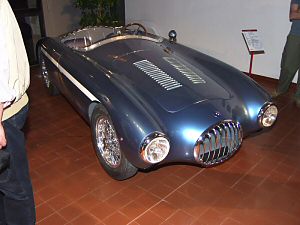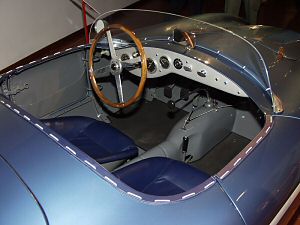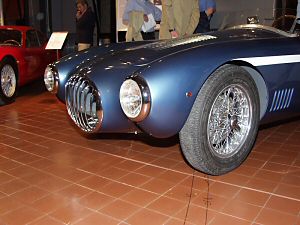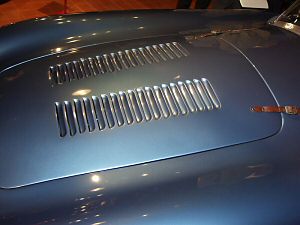LOT 258: A 1956 Maserati A6G/2000 Coupé
Estimate: £140,000-£180,000
AUCTION RESULT: Lot 258 was sold at a price of GB £231,000
Certificato di Proprieta - Carta di circolazione
Estimate: €200,000 - €260,000 (US $276,000 - $359,000)
Chassis No. 2125 - Engine No. 2125
From the Italian Collector Sig. Giuseppe Prevosti
Specifications:
150bhp, 1,985cc inline double overhead camshaft six-cylinder engine with three twin-choke Weber carburettors, four-speed manual transmission, independent front suspension via wishbones and coil springs, rigid rear axle with leaf springs, and four-wheel drum brakes. Wheelbase: 100.4in. (2,550mm).
In the years leading up to World War II, the Maserati brothers focused most of their efforts on producing various racing models. A brief stint with Diatto motor cars resulted in the acquisition of a Grand Prix car with a supercharged, twin-cam engine that ushered in an era of successful Maserati vehicles. Alfieri Maserati earned a class win at the 1927 Targa Florio and the company later produced a sixteen-cylinder racer capable of reaching 155 miles per hour!
Pre-war production was highlighted by the 6CM Monoposto, which was designed by the brothers in 1936. The 6CM, of which only 11 monopostos and 16 wide-chassis examples were ever built, featured a 1,500cc supercharged six-cylinder engine and was quite a successful racing car in the late 1930s. By 1938, however, Maserati was bought out by industrialist Adolfo Orsi under a 10-year contract. World War II, however, curbed most racing projects and the remaining brothers chose to return to their native Bologna, where they founded OSCA.
With production reformed to include road cars, Omer Orsi took over control of Maserati from his father Adolfo. The newly renamed Officine Alfieri Maserati, now based in Modena, had only 30 employees in 1947 but Orsi’s ambitious plans required a continuation of the Maserati racing tradition alongside low-volume production of road cars.
Maserati’s first true production car, the A6 series, was introduced to the public at the 1947 Geneva motor show. The 6CM engine was substantially redesigned and modernized by shortening its stroke and increasing the bore to make room for larger valves and to increase maximum rpm. Fitted with a single overhead camshaft, the first 1,500cc models employed hemispherical combustion chambers with long rocker arms to actuate the valves. Not surprisingly, a twin-cam version was developed for the racing A6GCS and the Formula 2 A6GCM Monoposto. This engine was soon adapted for the road cars in 2-litre form as the A6G/2000 and A6G/54. Both variants were offered simultaneously.
Produced from 1946 to 1957, only 139 A6s were ever built, 60 of which were A6G/2000 examples fitted with the twin-cam 2-litre engine. The car’s construction was in fact rather simplistic, based upon a tube frame supported by independent front suspension with wishbones and coil springs and a rigid rear axle. Large drum brakes were fitted at all four corners. In its final version the A6G/2000 made some 160 horsepower, with three twin-choke Weber carburettors. By comparison, the highly acclaimed Jaguar XK120 produced the same amount of power, but with an additional 1.5-litres of displacement. Weighing less than 900 kilograms, the A6G/2000’s performance numbers were quite remarkable, with some reports claiming a top speed of 140 miles per hour.
The A6 series was built during a critical phase of innovation and evolution among Italian coachbuilders. The angular shapes and projecting wings of the 1930s were quickly evolving into envelope bodies with tapered tails and ever more extravagant and experimental concepts. Maserati’s A6, with its refined six-cylinder engine and chassis and exceptional build quality, was welcomed by many Italian coachbuilders seeking to implement their new concept studies. Farina, Vignale, Frua, Zagato, and Allemano all constructed A6 variants that ranged from luxurious grand touring machines to lightweight, aerodynamic racing cars. In fact, overall appearance differed significantly from car to car. However, the distinctive oval grille, headlamp and taillight assemblies, as well as the trim strip running the length of the body, were generally standard fare. Established in 1928 by Serafino Allemano, Carrozzeria Allemano built 21 Maserati A6 examples as well as several prototype models of the later 3500GT.
The Maserati A6G offered here has remained in Italy its entire life. Constructed in 1956 by Carrozzeria Allemano, it was delivered new to Guerrino Lelli of Forli and sold on to Primo Rustignoli in 1961, also of Forli. Thereafter, the Maserati was owned by Giampiero Corti of Florence before its acquisition by renowned restorer Giovanni Giordanengo in 1993. Mr. Giordanengo’s restoration shop worked on the car over the course of the next three years before selling it to Sig. Prevosti in 1996. Since that time chassis 2125 has only covered approximately 1,500 kilometres.
The quality of the restoration is excellent. The fit of all body panels is virtually perfect and the car is finished in a lovely shade of aquamarine, which is devoid of any imperfections. The quality of the chrome is also very good. The Borrani wire wheels are as new, as are the tyres. A correct spare wheel and tyre reside in the boot, which is finished in black and trimmed with tan carpets.
The interior was fully retrimmed with tan upholstery and tan carpeting during restoration to concourse standard. The interior boasts a beautifully finished Nardi steering wheel and the car retains all of the correct instrumentation, which was also restored and appears to be in good working order.
The engine is a true work of Italian craftsmanship boasting six-cylinders, twin overhead camshafts and a twin plug head, it is beautifully presented and obviously fully restored to the same high standard of the car’s overall condition.
Overall this Maserati A6G/2000 presents extremely well; its elegant and stylish colour combination is highlighted by beautiful details both inside and out. As one of a few Allemano-bodied examples, this A6G/2000 also benefits from well-documented provenance and an excellent restoration, making it one of the most desirable and rare examples we have had the pleasure of presenting at auction in recent years. It is very unusual to find 1950s coachbuilt Maseratis for sale and a car of this standard and beauty will be a welcome addition to any important collection. |
LOT 261: A 1948 Maserati A6 1500 GT Berlinetta
Estimate: £140,000-£165,000
AUCTION RESULT: Lot 261 was sold at a price of GB £176,000
Bill of Sale Only - Proof of European Taxes Paid
Estimate: €210,000 - €240,00 (US $289,000 - $330,000)
Chassis No. 056 - Engine No. 079
From the Italian Collector Sig. Giuseppe Prevosti
Specifications:
78bhp, 1,488cc in-line six cylinder single-overhead camshaft engine with triple Weber 36DCR carburettors, four-speed gearbox, independent front suspension via wishbones and live axle rear suspension, and four-wheel hydraulic brakes. Wheelbase: 100.4in. (2,550mm).
There were seven Maserati Brothers. In 1937 when Officine Alfieri Maserati was sold to the Italian industrialist Commendatore Adolfi Orsi, just three of the fratelli Maserati were still alive.
Orsiand his son Omer became the heads of the company but Ernesto, Bindo, and Ettore Maserati were contractually bound to Maserati for ten years, kept on in the capacity of chief engineers. The company was moved from Bologna to Modena and in 1948, at the end of their agreement with Orsi, the Maserati brothers moved back to their home town and formed OSCA.
Before they left Maserati, the brothers had designed and produced a straight-six engine, the A6 1500 TR (Testa Riportata). The ‘A’ stood for the founder of Maserati, Alfieri, the ‘6’ for the number of cylinders and the ‘1500’ for the engine’s capacity. It was based on the Maserati 6CM and was designed for competition use. It had a capacity of 1,500 cc and produced 65 hp; it would be developed over the years and became extremely successful.
The engine first appeared in the A6 Sport or Tipo 6CS/46, a barchetta prototype, developed by Ernesto Maserati and Alberto Massimino. Two were produced early in 1947 and finished first and second at Piacenza, with Guido Barbieri winning and Mario Angiolini coming second. In motor racing A6 derivatives were incredibly successful. The A6 GCS was raced by Luigi Villoresi and Alberto Ascari and the 1948 Italian Grand Prix was won by Giovanni Bracco in one of these cars. Juan Manuel Fangio won the Italian Grand Prix in an A6 GCM and the A6 GCS/53 won the Italian Grand Prix in 1953 and 1954 with Sergio Mantovani and Luigi Musso.
Although Maserati had always been a builder of racing cars, after the departure of the Maserati brothers Adolfo Orsi realized that the company should go into road car production and decided to build a sports road car, aimed at an exclusive clientele. This was Maserati’s first production model.
The road-going A6 was first shown by Pininfarina at the Geneva Salon in 1947. Coachwork was mostly by Pininfarina, who made subtle changes and improvements with each successive body evolving into the fast-back berlinetta. Made in lightweight aluminium, these cars were light and nimble, weighing just 950 kg (2,090 lbs). Carrozzeria Zagato re-bodied at least one example, and Pininfarina made two convertible versions, one of which they showed at the Turin Motor Show in 1948.
61 of these cars were produced by Maserati, the last of which was completed at the end of 1950. The first A6 1500– the Geneva show car – featured pop-up headlights and a Plexiglas sunroof. The dashboard consisted of Jaeger instruments; later models would have the optional clock. They were all shod with 16in. Borrani wheels with alloy rims.
The Maserati A6 1500 GT presented here, chassis number 056, was completed on 18 October 1948 and sold new to Francesca Ajella, for whom it was registered in Italy with the number MI122024. Almost all of the Maserati A61500s were fitted with a single Weber 36 DCR carburettor. Of the 61 cars built, very few had the optional triple Weber carburettor configuration. Chassis 056 is one of these rarest of rare cars, with the uprated engine specification giving approximately a 20 per cent power increase.
This car was purchased by the vendor in 1990 from Luigi Mennella from Carmel, California. The car is finished in dark red with a tan interior, which was re-trimmed by the noted Italian upholsterer Lupi in 1993 when the car was restored.
The car is well documented with a continuous ownership history. It is unknown how many Maserati A6 1500 GTs survive today, but they rarely come up for sale. This early example of Italian production coachbuilding combines the finesse and detail of one of the top carrozzerie with the exemplary racing based engineering and winning heritage of a motoring thoroughbred.
Addendum: Please note that the engine fitted to this car is #79, not #75 as noted in the catalogue. Also note that this car is sold on Bill of Sale Only. |


